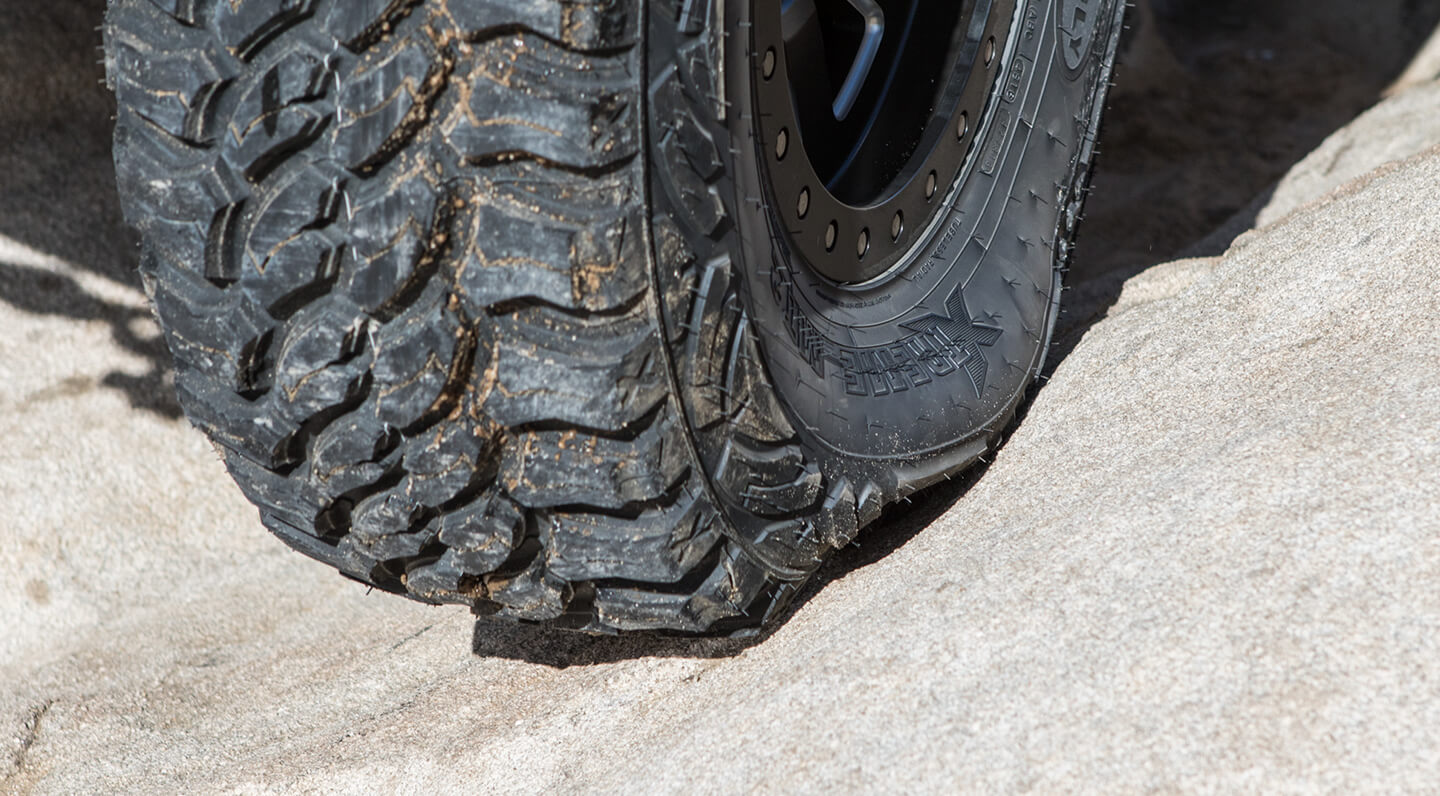
Airing Down: The Best Free Mod Ever

The right vehicle, suspension, tires, lockers, armor, and other mods all help on the trail. But the biggest bang for your buck (especially since it is free) is to run the right air pressure in your tires.
Why You Want To Air Down
There are two huge benefits to airing down off-road: increased traction and better ride quality. Both are linked to the fact that less air in the tire allows the carcass to be more compliant and follow the terrain better. What terrain you are in will dictate what pressure you run. On washboard and rough roads, lowering the pressure will provide an improved ride without sacrificing handling too much. That lower pressure allows the wheel to turn inside the tire before steering input is transferred to the ground, and can cause the sidewall to flex when turning. That sidewall flex is also what improves the ride, so there is a fine balance when speeding down a washboard road.
All that extra rubber on the ground also increases traction. A generous sidewall bulge might be what is the most visible. But the footprint of the tire not only gets wider as the pressure is lowered, it also gets significantly longer front to back as a function of the tire construction. The increased surface area reduces the contact pressure across the tire, allowing the vehicle to float rather than sink in soft terrain. And lower air pressure in the rocks puts more rubber in play, increasing traction. This is particularly true for the new crop of tires with sidewall lugs that are just along for the ride at street pressure, but add more biting edges as they contact the terrain at low pressure.
Different Ways To Reach The Same Goal
So now that we have convinced you that it is worthwhile to lower your tire pressure for the trail, it is time to explore the myriad of ways to accomplish that task. You could always press the valve core down with your key and guess at how much pressure is left in the tire. But there are far more elegant and efficient ways to air down without breaking the bank. The simplest low-cost option is the deflators offered by Teraflex and Rugged Ridge. These merely screw on to your valve stem and depress the valve core for you. We put them on all four corners and then go back to the first tire with an air gauge and check the pressure until it reaches our goal, then remove all four. They come in a set of four that screw together and hardly take up any room, and they cost under $20. We have a set in the glove box of every 4×4 we own. With no moving parts, they will never leave you stranded.

These Pro Comp Xtreme MT2 tires are a Load Range D tire with Tri-Ply three-ply sidewalls. They are rated at 3,525 lbs. each at a maximum inflation pressure of 50 psi. Since our test TJ weighs under 5,000 pounds, we run them at 30 psi on the street.

We ran our 2003 TJ through the same section of trail with the Xtreme MT2s aired up to 35 psi, 25 psi, and 15 psi for comparison purposes. We could readily see how the sidewall bulge increased as the pressure decreased. This had a modest effect on the ground clearance as the tire squats, but the increase in traction made it a worthwhile tradeoff.
Deflators With Integrated Gauges
A faster option, particularly for large tires, is the “E-Z Deflator” style of deflator offered by Smittybilt, Currie Enterprises, and ARB. Rather than depressing the valve core, which is the limiting factor in how fast air can escape the tire, these deflators actually unscrew the valve core and remove it. You can do this yourself with a simple valve core tool, but don’t be surprised when the valve core goes flying through the air and you end up with a flat tire as you scramble to find it. In contrast, these deflators capture the valve core inside a brass housing. They also include an integrated gauge so you can quickly check the air pressure as you are deflating the tire. The downside is that you can only air down one tire at a time, and we have found the gauges on these deflators not to be super precise since there is still some air leaking out even when the deflator is closed.
Auto Deflators
The most elegant solution of all are the brass deflators from Coyote Enterprises, Trail Master, and Rampage. These deflators use a plunger with a seal and a spring that must be overcome to release pressure. The spring can be preloaded to allow them to shut off at different pressures. This should be done ahead of time so you know what they are set to before you hit the trail. The included instructions outline this process in detail. While this takes some extra work up front, you can install all four deflators and then talk to your friends at the trailhead without being concerned about watching your air pressure. You can even install these deflators and air down as you drive! Sometimes if the pressure difference between the air in the tire and where the deflator is calibrated to is not significant, you will need to pull the ring on the end of the plunger to manually start the process. And, if you want to run a different pressure than what you calibrated the deflators to, you still end up pressing down the valve core and checking them with a gauge.
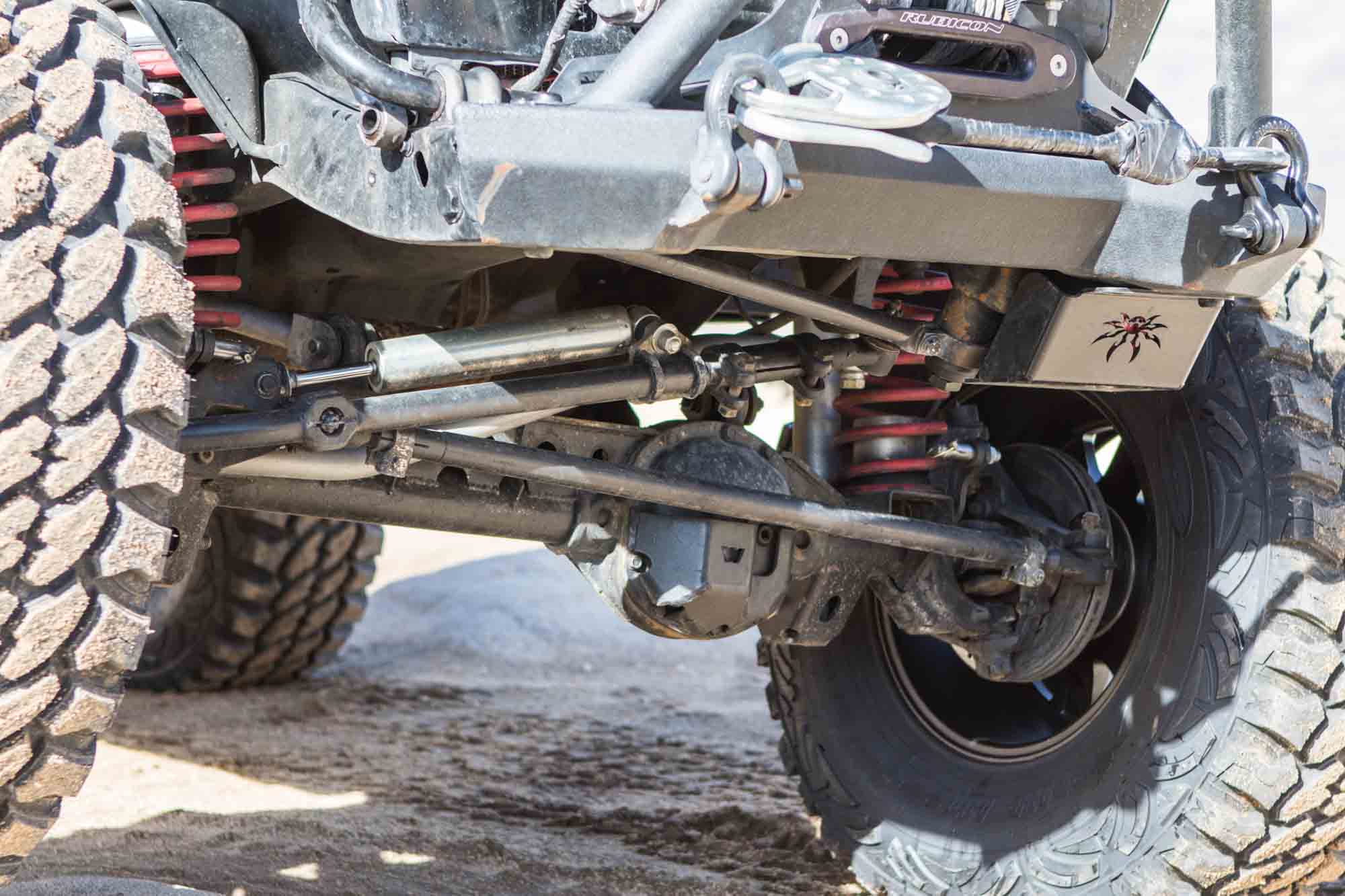
As the footprint of the tire increased, so did the steering effort. Our test TJ has the factory Saginaw power steering with a Currie Currectlync tie rod and drag link. Even at 15 psi in the tires, we were able to steer, but we had to be rolling to do so. Hydraulic assist steering becomes a worthwhile upgrade if you are running low air pressure in the rocks regularly.

The sidewall on the Pro Comp Xtreme MT2 actually becomes part of the tread at extremely low air pressures. This puts more biting edges and lugs on the ground to keep your rig moving forward. The thicker rubber also helps protect the sidewalls from punctures.
What Pressure To Run On The Trail (And The Street)
The proper air pressure on the street will allow the entire tread surface to wear evenly without crowning or cupping. The risk with too low of a tire pressure at high speeds is that the friction between the tire and the road creates heat. That heat can cause the tire to fail. Off-road the rules change. The exact pressure you want to run will require some experimenting and depend not only on the terrain but your vehicle’s weight, tire construction, sidewall height, and more. As a general rule of thumb, we generally air down to around 20 psi for washboard roads. In the rocks, we run about 12 psi in our Jeep with traditional, non-beadlock wheels. In soft sand and deep snow, we go even lower, but then you risk debeading the tire.
What If The Tires Comes Off The Rim
The limiting factor is that the air within the tire pushes out against the sidewall to retain the tire on the rim. Letting out too much air can result in a debeaded tire unless you are running beadlock wheels that physically clamp the tire to the rim. This situation does not have to be a crisis, but you never want to keep driving on a tire after it has come off the rim or you risk cutting the tire cords and ruining it. Instead, stop and lift that corner of the vehicle to remove the weight on the tire, and reinflate it. A blast of air works better than a slow, steady stream of air. Sometimes a ratchet strap around the circumference of the tire is necessary as well to push the sidewalls out towards the edge of the rim. Just remember to loosen the strap once the bead has seated or the strap could fail as it is subjected to the increase in the size of the inflating tire.

Before hitting the pavement, you will want to air the tires back to the proper pressure for the street. If you are wheeling close to town, this can be done with a few quarters at the local gas station. There are a lot better options though. These include portable electric compressors, hard mounted electric compressors, CO2 tanks, and belt-driven compressors.
You Need To Air Back Up
Of course, onboard air is useful for more than just reseating your tire on the rim. Lowering the tire pressure to go off-road is actually the easy, and inexpensive, part of the equation. When you get back to the pavement, you are going to need to air back up. As we noted above, running low pressure at high speeds creates a tremendous amount of heat due to the rolling resistance. The drag from single digit tire pressure will be significant enough to notice with regards to acceleration, fuel mileage, and handling. You can bum air from a friend or feed quarters into a gas station air compressor, but a better option is to add onboard air to your rig. This could be a fixed compressor that runs air lockers and tools, a lightning fast CO2 tank, or a portable compressor that you can move from vehicle to vehicle. Onboard air has other benefits beyond just airing up your tires. It can also be used to air up mattresses and rafts, or blow off your dusty interior when you get to camp.
Armed with this information, you can make your next trip in the dirt more comfortable and make your rig more capable. You might even impress some of your friends and be able to share this information with others at the trailhead. And you won’t break the bank in the process. Stay aired down, friends.



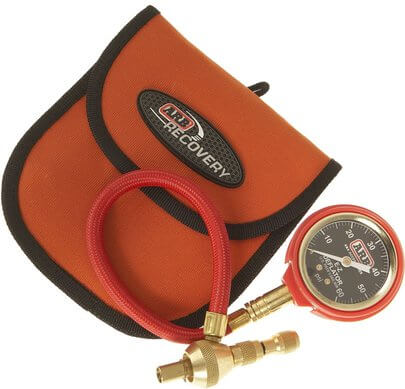
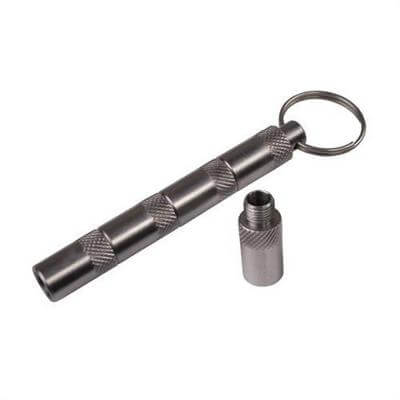
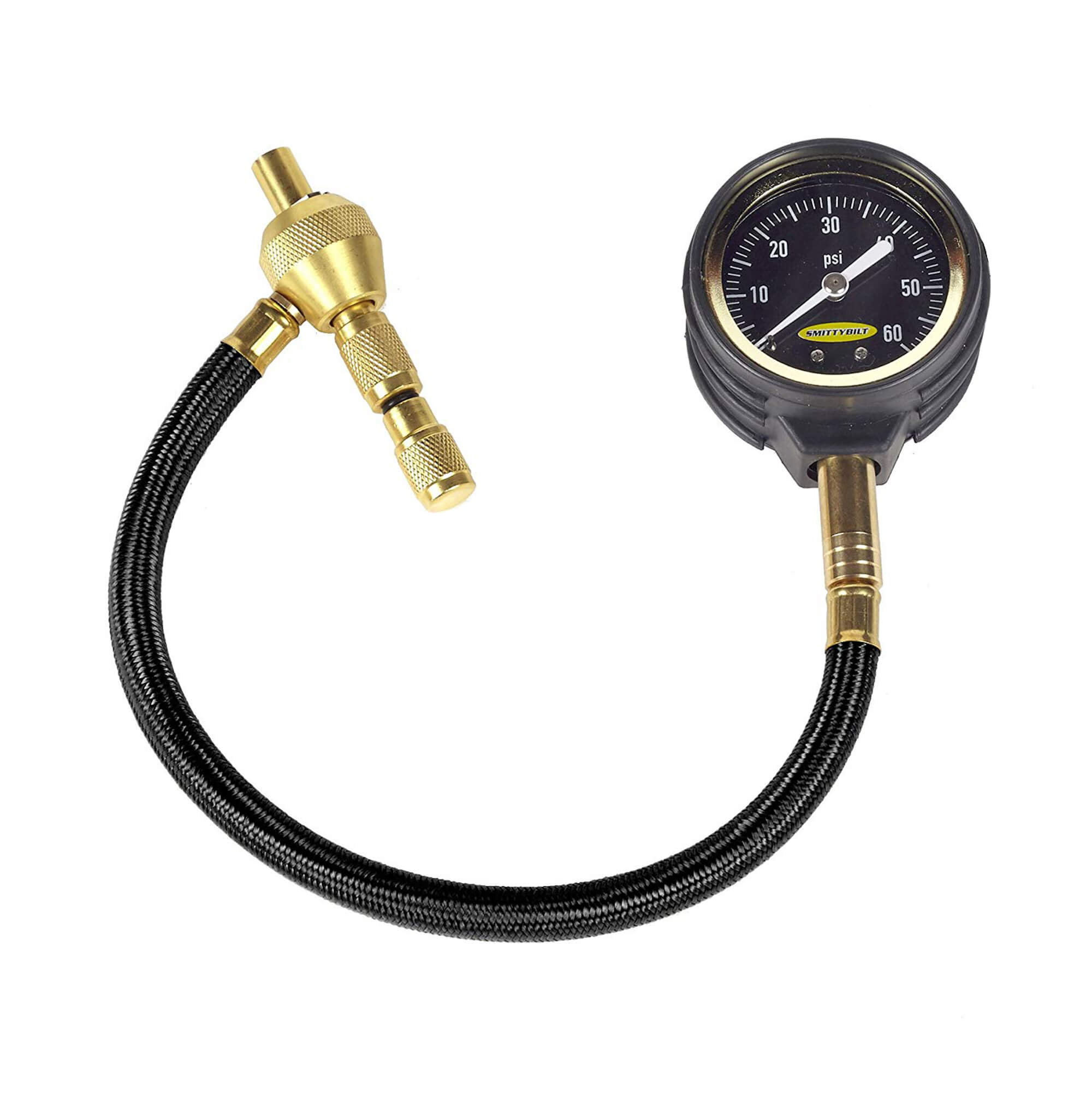
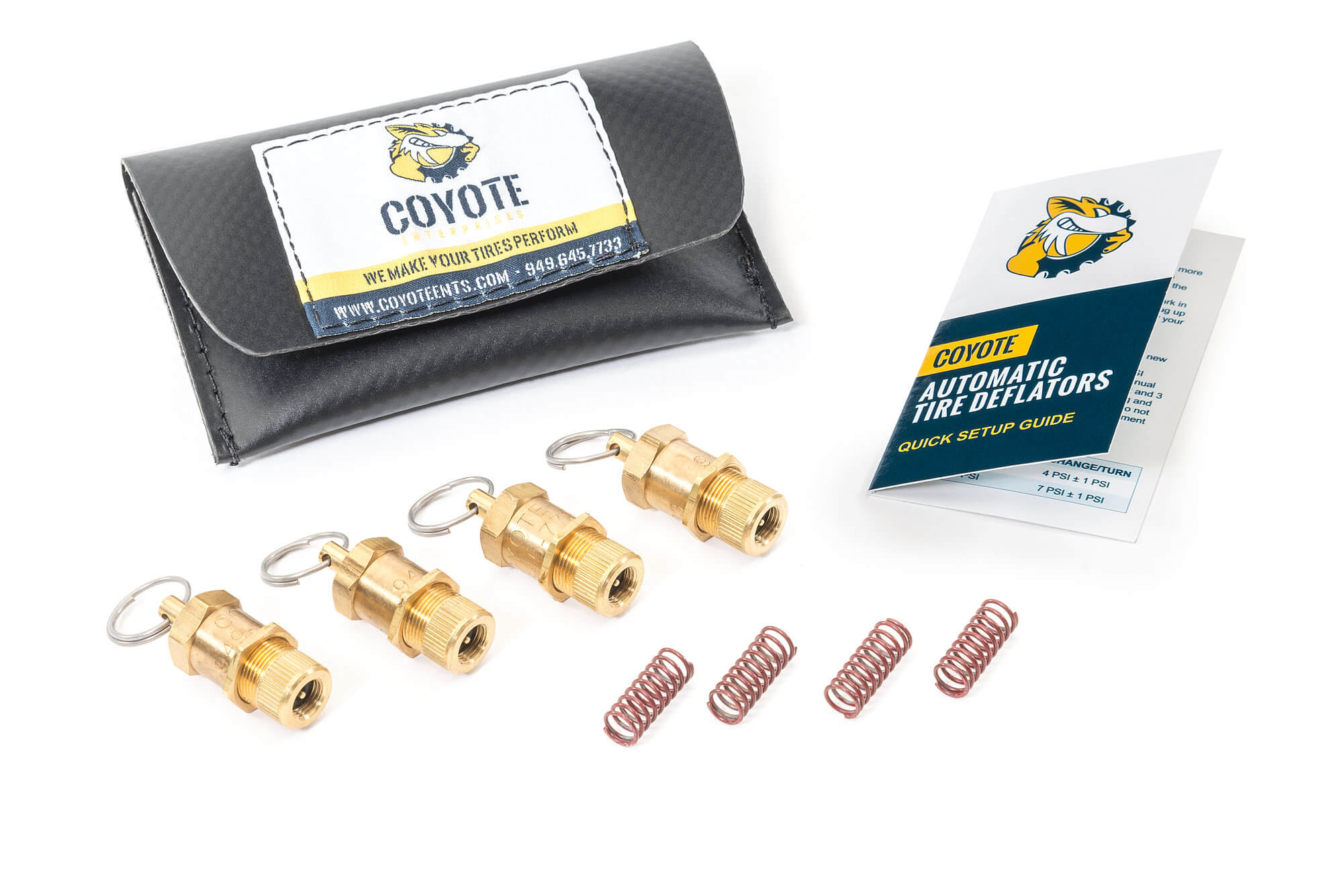
2